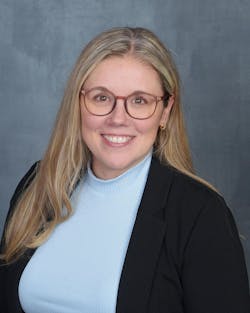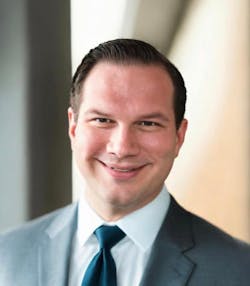Taming the Beast: Best Practices for Managing HLD Inside and Outside the SPD
High-level disinfection (HLD) of medical devices, including endoscopes, outside of the sterile processing department (SPD) is often a blind spot in healthcare facilities. With reprocessing occurring in decentralized pockets—from imaging to gastroenterology (GI) to ambulatory clinics—oversight is limited, risks are heightened, and accountability can be murky.
“High-level disinfection outside of SPD has always been a challenge. It’s like the Wild West, every man for himself,” said Amy DeGraw, BSHA, CRCST, CHL, clinical educator for the Healthcare Sterile Processing Association (HSPA). “It’s time-consuming, complex, and often invisible until something goes wrong.”
Whether an organization chooses to keep HLD decentralized or bring it into the SPD, both models require strong collaboration, education, documentation, and leadership support.
In this first of a two-part series, HPN offers a high-level overview of HLD inside and outside of the SPD. DeGraw and John D. Shadle, BA, CRCST, GTS, operations supervisor, Temple University Health System in Philadelphia, served as our subject matter experts (SME) for this article.
The next article, slated for the October 2025 issue of HPN, will present a more detailed roadmap for centralizing HLD to the SPD.
About our experts
DeGraw has experience in both sterile processing education and infection prevention. She previously served as an infection preventionist (IP) and sterile processing education coordinator at Froedtert Hospital and held leadership and instructional roles at Mercyhealth and Blackhawk Technical College.
Shadle has 25 years of experience managing HLD inside and outside the SPD. He serves as secretary and past president of the Keystone Alliance of Sterile Processing Professionals (KASPP), supporting education and advancement in the field. Prior to joining Temple University Health System this year, Shadle held SPD leadership roles at UPMC, Wellspan Health, and Aureus Medical Group.
Considerations, challenges, and opportunities for centralizing HLD to the SPD
Drawing from their experiences, DeGraw and Shadle offered their insights and advice on managing HLD both when it is performed across various clinical departments and when sterile processing teams have successfully centralized it within their departments.
Be aware of the risks
“There are a number of risks that come into play when HLD is performed outside the SPD,” said Shadle. “The biggest issue I’ve seen—not just in hospitals but in other sites—is a lack of consistent and proper education and competency. Staff are often trained on how to perform HLD safely, but not on the ‘why’ behind it, which can lead to problems when things don’t go as planned. One also needs to acknowledge that when a specialist in another role performs HLD, their primary focus remains their main responsibilities—not high-level disinfection.”
“Of course, any competent individual can complete a task without error, but the lower the frequency of performing the task, the greater chance of error,” Shadle added. “Conversely, when the frequency is increased, efficiency and proficiency naturally follow. You know I've changed a few tires in my life, but I've got nothing on the pit crew at the Indy 500.”
Uncover the invisible
DeGraw noted how many SPD teams lack visibility to where HLD is being performed in their hospitals and health systems.
“When I started as an SPD technician, I was completely unaware of what was happening outside my department,” said DeGraw. “It wasn’t until I entered leadership and was tasked with identifying all the departments outside of SPD that were performing HLD that I came to understand we weren’t the only ones performing this level of disinfection.”
“I think that's the case with many SPD teams,” she continued. “They're just very unaware of what is happening outside their department in terms of HLD and instrument reprocessing in general. I’ve asked SPD teams if they knew a department was disinfecting scopes, and they’d say, ‘We had no idea.’”
Because SPD professionals are usually not involved in conversations about reprocessing outside their department, it makes organization-wide HLD oversight very challenging. “If you don't know what's happening, you can't help with the process,” said DeGraw.
Rather than trying to assess and address all places where HLD is performed outside of the SPD – both onsite in a hospital and throughout offsite ambulatory sites – DeGraw suggests starting within the hospital’s four walls.
Build a village, not a silo
To identify areas where HLD is performed outside of the SPD, DeGraw recommends tapping into a healthcare organization’s supply chain and biomedical teams, stating, “Build a relationship with them because they can tip you off to what is happening across your healthcare organization, serving as your early-warning system.”
“I turned to my supply chain/purchasing department and asked them to help me identify departments outside of the SPD that were placing orders for HLD equipment and supplies,” DeGraw explained. “Then I could approach those requisitioning departments and have conversations about their protocols and practices.”
“Because the biomedical team is responsible for serving HLD equipment, they are another great partner in this effort,” DeGraw continued. “For example, they can notify you when a department installs an automatic endoscope reprocessor (AER), which SPD might not know about.”
Approach stakeholders with curiosity and compassion
DeGraw acknowledges that many clinical departments have trust issues with their SPD that drive them to retain control over HLD. She stresses the need for SPD to focus on relationship building before attempting any HLD transitions.
“I'm guilty of this as well: Going in there like a bull in a china shop and saying, ‘You’re doing HLD wrong. SPD is taking it over,’ basically being inconsiderate of their efforts and not acknowledging their feelings,” said DeGraw. “Moving HLD to SPD is not meant to be punitive. So, you really have to focus on that relationship building to have them understand that you’re there to help, to alleviate them of the reprocessing burden so they can focus more time on their patients.”
She suggests SPD professionals first approach clinical departments with curiosity-led conversations. “Like, ‘Hey, this is who I am. Can I shadow you? Can you walk me through your HLD process? What challenges do you face? How can I help you?’ Show them that you care about their processes and that you're there to help, not make it harder for them,” she explained.
Perform risk analysis to guide your approach
As DeGraw explained, risk assessments can reveal whether a department should retain HLD or transition it. Again, multidisciplinary collaboration is key to success. SPD doesn’t have to go it alone. She stated:
“Infection prevention (IP) is your best collaborator in performing risk assessments because if there are gaps in HLD processes, it affects them as well. As an IP, I wrote risk assessments related to HLD and reprocessing all the time. So, work with your IP resources and make it a team effort.”
Because clinical departments might push back on the SPD taking over HLD, a risk assessment is an invaluable tool to help SPD and IP teams make their case for change.
“In my experience, it’s common for clinical stakeholders to think, ‘SPD is going to lose or damage my instruments or equipment.’ That makes them very reluctant to hand HLD over. So, the risk assessment should convey, ‘Here's our healthcare organization’s policy and procedures for HLD. Can you meet these in your own department? If yes, then that’s great. If you need help, what steps do you need to take to meet them? And if you can’t meet them, then SPD should be taking that over.’”
As SPD manager at UPMC, Shadle led the effort to centralize HLD for the gastroenterology (GI) and pulmonary departments, leveraging ANSI/AAMI ST91 as evidence that change was needed. He described his work with pulmonary department leadership:
“After ST91 was released, we had frequent meetings with the team to explain the importance and reasons why it’s better for the responsibilities to change. The manager of pulmonary, Emily McCann, was particularly invested in these meetings and even had celebratory luncheons for the team to show her team’s gratitude for taking on the new tasks.
Consider the impact of centralization on SPD and clinical stakeholders
While hospital and SPD leadership might feel HLD centralization is the best move, it is best to take a step back and assess whether SPD has the resources to do it successfully, as DeGraw explained:
“I’ve been in healthcare organizations where HLD centralization was SPD led, and others where it was leadership telling the SPD team that they needed to take it over. Given the strain on SPD resources today, it makes sense that many SPD teams would be reluctant to take on the extra work. So, in the case where hospital leadership is spearheading the effort to centralize HLD, SPD leadership should insist on running the numbers before any change happens.”
According to DeGraw, key factors for consideration include:
- Does the clinic have enough devices/instruments to maintain patient care continuity based on the anticipated SPD reprocessing turnover time?
- How many more items will come into the SPD for reprocessing?
- When will the additional HLD reprocessing take place, who will that impact – first, second, third shift?
- How many more full-time employees will be required to do the extra reprocessing work?
- Does the SPD have enough reprocessing equipment to accommodate the extra volume?
- How will the instruments/devices be transported to/from the SPD?
- Do the departments have the necessary resources to properly pre-treat items and prepare them for transport?
“And given the reluctance of some clinical departments to entrust HLD reprocessing to the SPD, particularly related to fears that the SPD might lose instruments/devices, you need to have a system in place to track instruments and ensure they are accounted for throughout the whole process,” said DeGraw.
Shadle spoke to his experience overcoming challenges with transport when centralizing HLD to the SPD at UPMC, stating:
“One challenge with pulmonary was physically transferring the scopes to the processing room, which was on the other side of the hospital. We also had concerns about the scopes being processed in a timely manner, so the team was educated on proper ‘delayed reprocessing’ processes and procedures written.”
“While it was a very time-consuming and arduous task, in the end it paid off,” Shadle continued. “For their efforts, during Sterile Processing Week in the fall of 2023, the department was awarded HealthMark’s ‘Heart of the Hospital’ nationwide award.”
Leave HLD where it is, when it makes sense
DeGraw and Shadle point out how every hospital and clinical department is different; therefore, there may be cases where it isn’t practical to bring all HLD into the SPD.
“There are some departments where it makes sense to keep HLD there,” said DeGraw. “Like ultrasound where they are reprocessing probes with Trophon. It’s a quick and effective process that’s repeated so many times per day the clinical staff generally has it down.”
“At UPMC, we examined taking on the responsibilities of reprocessing the transesophageal echocardiogram (TEE) at the site, but it proved impractical in many ways,” said Shadle. “After coming to this conclusion, we worked with quality and regulatory and decided that my leadership team should perform audits for competency and compliance.”
Lead HLD education and training
When HLD remains decentralized, SPD team responsibilities go beyond reprocessing items to educating and training clinical team members on proper HLD policies and protocols. Shadle commented on his approach at UPMC:
“We implemented several strategies and systems for training and competency. First off, we conducted numerous in-services where every staff member received regular vendor-led education on the flexible scopes, reprocessors, and support equipment to ensure they knew how to use the equipment and every scope processed was patient safe.”
“Also, my first and second shift supervisors were the only team members responsible for completing competencies after they received specialized 1:1 training with vendors on all scope types,” he continued.
“Additionally, we created an ‘SPD HLD Team's page’ which included everything from competency documents, relevant IFUs and weekly cleaning documents, etc.,” Shadle added. “This proves quite handy during a survey to retrieve requested information for auditors. I referred to it as our ‘SPD Swiss army knife.’”
DeGraw recommends designating and training departmental “super users” who own the HLD processes in their areas.
“At the two facilities where I oversaw HLD, we designated ‘super users’ in each department performing HLD outside of the SPD. These individuals were trained by SPD, received a higher level of competency validation, and were responsible for training and oversight within their departments.”
Share oversight of decentralized HLD
While educating and training clinical department staff members and designating super users for HLD takes some of the burden off SPD while helping enhance reprocessing effectiveness and safety, it is not a “set it and forget it” initiative.
“In large hospital systems, managing HLD outside the SPD is a full-time job,” DeGraw said. “Having super users in place is helpful, but I still had to check on them multiple times a year. Each quarter, I’d visit these sites, verify their processes, review records, and ensure everything was done correctly. It was a time-consuming task that became a job in itself.”
“I’ve found that SPD oversight of HLD outside the department is really a mixed bag,” she added. “While SPD may own the policies and procedures, they often have very little control over how other departments carry them out.”
Again, oversight can’t fall on the shoulders of the SPD team alone. DeGraw encourages the engagement of both IP and quality teams to assist with enforcing policies and procedures, stating:
“Because IP and quality often do their own rounding on the departments, they can help with HLD oversight. I would ask them, ‘When you go into this department during your rounding, can you check these things for me?’ Having that additional oversight helps eliminate gaps in HLD processes. You also need support from leadership, especially when you identify gaps in compliance that must be addressed.”
Shadle commented on HLD at his current employer Temple University Health System, where clinical departments continue to reprocess outside of the SPD:
“Being at Temple is a big change. I first would like to say that I'm excited to be part of the SP leadership team with LaTrice Tate and Melissa Vargas. We have one awesome HLD coordinator, Michelle DiSalvo, who works between multiple sites acting as an educator and facilitator, performing competencies and acting as a point person for all things HLD. I can't say enough wonderful things about her and how many times I wished I had someone in that capacity in previous roles.”
When asked how he and his team manage quality assurance for HLD processes performed outside of the main SPD, Shadle’s response was “surveillance!” He described several strategic approaches they have employed:
- Engage internal and external auditors: Partner with the system educator and a primary vendor to conduct complementary mock-surveys and provide process improvement recommendations.
- Digitize all possible documentation: Convert any trackable process into an electronic record, including those supported by device interfaces and tracking systems.
- Eliminate reliance on paper logs: Ensure that hand-written records—such as pre-cleaning start times, cleaning delays, and manual documentation—are entered into the electronic tracking system or securely retained by other means.
- Implement routine auditing and checks: Regularly audit cycle processes; daily shift reports should include checks on critical areas, such as weekly endoscope reprocessing, manual HLD, and water filter expiration.
- Establish documentation as a habit: Foster a culture where thorough documentation becomes second nature to staff, supporting consistency and compliance over time.
“Looking ahead, I'd like to see all of the flexible endoscope entered into our tracking system, if anything just for comfort and ease of process retrieval,” said Shadle. “Scope reprocessing can occur in different departments, floors, even buildings; it’s so much easier to be able to retrieve the cycle info without interfering with the working technicians from another space.”
Wrap up and next up
Managing high-level disinfection outside of the SPD is undeniably complex, but as this article highlights, it’s far from insurmountable.
Whether decentralization remains the reality or centralization is the goal, success depends on multidisciplinary collaboration, data-driven decision-making, and a commitment to education, accountability, and continuous oversight.
By uncovering hidden risks, building cross-functional relationships, and leveraging proven best practices, healthcare leaders can tame the “beast” of HLD and safeguard patient care.
Look for part two of this series in HPN’s October issue, where we’ll share a detailed roadmap for bringing HLD under centralized SPD control.
About the Author
Kara Nadeau
Senior Contributing Editor
Kara Nadeau is Sterile Processing Editor for Healthcare Purchasing News.



